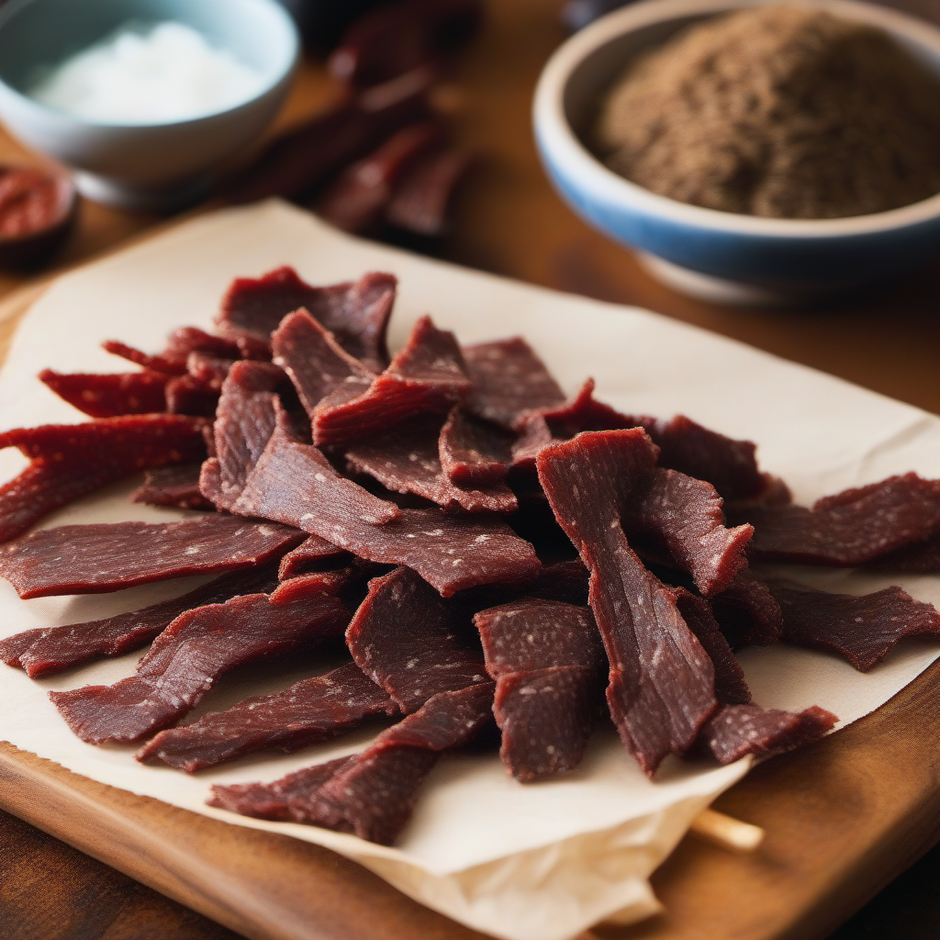How to Store Homemade Jerky - Tips for Keeping Your Jerky Fresh
Homemade jerky, with its rich flavors and satisfying chewiness, is a culinary delight that you’ll want to savor over time. Proper storage is essential to ensure that your homemade jerky remains fresh, flavorful, and safe to eat for as long as possible. In this article, we’ll explore the best practices for storing homemade jerky to maximize its shelf life and enjoyment.
Why Proper Storage Matters
Before delving into the storage techniques, it’s crucial to understand why proper storage is essential for homemade jerky:
-
Preservation: Storing jerky correctly helps preserve its quality, texture, and flavor. Proper storage prevents spoilage and extends its shelf life.
-
Safety: Homemade jerky is susceptible to bacterial growth and mold if not stored properly. Ensuring safe storage conditions is vital to prevent foodborne illnesses.
-
Cost-Efficiency: By keeping your jerky fresh, you can enjoy it over a more extended period, making your homemade treat more cost-effective.
The Basics of Storing Homemade Jerky
Follow these fundamental steps to ensure that your homemade jerky remains in top-notch condition:
1. Cool It Down
Before storing your homemade jerky, make sure it has completely cooled down to room temperature. Placing warm jerky in storage can create condensation inside the container, which can lead to moisture buildup and spoilage.
2. Remove Excess Moisture
Jerky should be as dry as possible before storage. Use clean paper towels to blot off any excess moisture on the surface. Moisture can promote the growth of mold and bacteria.
3. Choose the Right Container
Select an airtight container for storing your jerky. Popular choices include resealable plastic bags, vacuum-sealed bags, glass jars with airtight lids, or airtight plastic or metal containers. The key is to prevent air and moisture from getting in.
4. Layer and Separate
Place a layer of parchment paper or food-grade wax paper between the jerky slices in the container. This prevents the pieces from sticking together and makes it easier to remove individual portions without exposing the rest of the jerky.
5. Store in a Cool, Dark Place
Store your jerky in a cool, dark place to protect it from heat and light, both of which can cause the fat in the jerky to go rancid and affect the overall quality. A pantry, cupboard, or a cool basement area works well.
6. Optimal Temperature
The ideal storage temperature for homemade jerky is below 70°F (21°C). Keeping it cooler helps extend its shelf life. However, avoid freezing jerky, as freezing can alter the texture and flavor.
Refrigeration or Freezing?
Generally, homemade jerky doesn’t require refrigeration if stored correctly in an airtight container in a cool, dark place. However, there are scenarios where refrigeration or freezing may be advisable:
Refrigeration:
If you plan to store homemade jerky for an extended period (several months to a year), refrigeration can help prolong its shelf life. Place the jerky in an airtight container or vacuum-sealed bag and keep it in the refrigerator. Be sure to check it regularly for any signs of spoilage, such as off odors or changes in texture.
Freezing:
Freezing jerky can significantly extend its shelf life, making it suitable for long-term storage. To freeze homemade jerky, follow these steps:
-
Place the jerky in a single layer on a baking sheet and freeze it for about an hour. This prevents the pieces from sticking together when frozen.
-
After the initial freeze, transfer the jerky to a vacuum-sealed bag or an airtight container. Remove as much air as possible before sealing.
-
Label the container with the date to keep track of freshness.
-
Store the jerky in the freezer at 0°F (-18°C) or lower. Properly stored, frozen jerky can last up to a year or even longer.
Signs of Spoilage - How can you tell if beef jerky is safe to eat?
It’s essential to monitor your homemade jerky for any signs of spoilage, even if you’ve stored it correctly. Signs that your jerky may have gone bad include:
-
Off Odor: If the jerky smells unpleasant, rancid, or moldy, it should not be consumed.
-
Changes in Texture: Jerky should maintain its chewy texture. If it becomes overly hard, soft, or crumbly, it may no longer be safe to eat.
-
Visible Mold: Discard any jerky with visible mold growth. Mold can produce mycotoxins that are harmful when ingested.
-
Off Flavor: If the jerky tastes unusual, bitter, or sour, it’s best to err on the side of caution and avoid consuming it.
Enjoy Your Homemade Jerky!
Homemade jerky is a delicious and nutritious snack that can last for an extended period if stored correctly. By following these storage guidelines and keeping an eye out for signs of spoilage, you can enjoy your homemade jerky safely and savor its flavors over time. So, whether you’re making it for yourself or to share with friends and family, make the most of your jerky-making efforts by storing it properly and relishing this tasty treat whenever you like.
**
